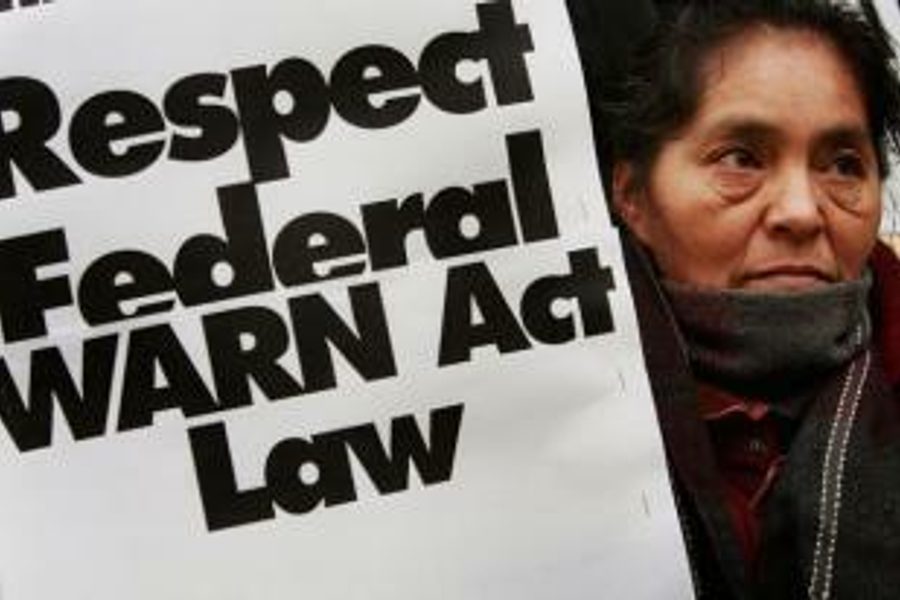
The past year’s epidemic of mass lay-offs by businesses ranging from factories to financial services has made many Americans familiar with what was once a little-known and oft-ignored law.
That would be the WARN Act, which mandates employers of more than 100 people give 60 days notice of major (those involving a third of the workforce) lay-offs or a company closing. In lieu of such notice, employers must give 60 days severance pay.
The law, passed in the wake of major de-industrialization and plant closings of the 1980s, theoretically offers workers and their community a chance to prepare for unemployment. But the WARN Act is routinely ignored, thanks to loopholes, lax enforcement and relatively painless penalties for those found guilty of violating it.
The Republic Windows occupation in December 2008 was perhaps the most famous recent case of WARN Act violations, as detailed in this blog post for my recent book on that struggle, The Revolt on Goose Island. (Read an In These Times excerpt from that book here.)
But this fall, the WARN Act could be significantly strengthened thanks to legislation introduced June 25 by U.S. Senator Sherrod Brown (D-Ohio).
The FOREWARN Act, or Federal Oversight, Reform, and Enforcement of the WARN Act, would increase enforcement of the law, expand the number of employers covered by it and extend the notification or severance pay period from 60 to 90 days. Employers with at least 75 (rather than 100) employees would be subject to the law, and the definition of “mass lay-offs” would be lowered.
The U.S. Department of Labor would take over pro-active enforcement, whereas now workers have to sue for redress after the fact. And penalties for violations would be doubled.
Additionally, employers would have to tell the Department of Labor — in writing — the reason for the plant closing or mass lay-off, whether the employer has jobs elsewhere and a statement of each employee’s right to wages and benefits. The bill would also mandate that the company notify the Secretary of Labor, elected officials including the governor, members of Congress and state representatives, and affected labor unions.
Currently only 24 percent of laid-off employees are covered by the WARN Act, according to a General Accounting Office report. And only one-third of covered employees actually get WARN Act notice. Employers sued for violating the act recently include Lehman Brothers, Sam’s Club, Goody’s, Tweeter, ABX Air, USA Jet Airlines and major law firms, according to Brown’s office.
Brown says:
Mass layoffs send shockwaves through individual households and entire communities. This bill is about protecting workers and helping communities respond to mass layoffs. The WARN Act was supposed to give employees time to find a new job. Unfortunately, fair notice has become the exception not the rule. This bill will modernize the WARN Act by closing loopholes and strengthening its enforcement. Workers and communities should be armed with best arsenal of protective measures during these challenging economic times.
Kari Lydersen is a Chicago-based journalist, author and assistant professor at Northwestern University, where she leads the investigative specialization at the Medill School of Journalism, Media, Integrated Marketing Communications. Her books include Mayor 1%: Rahm Emanuel and the Rise of Chicago’s 99%.








